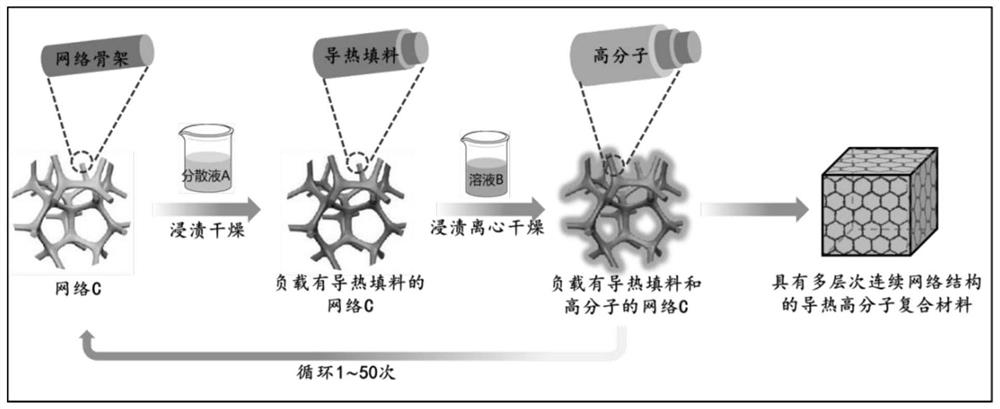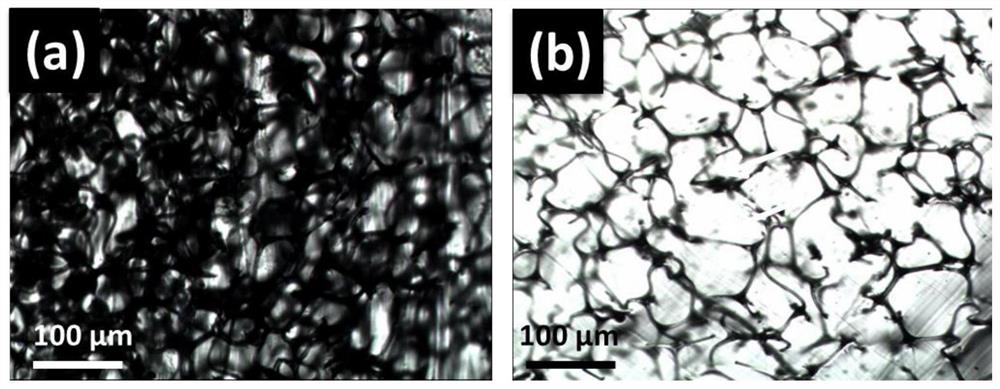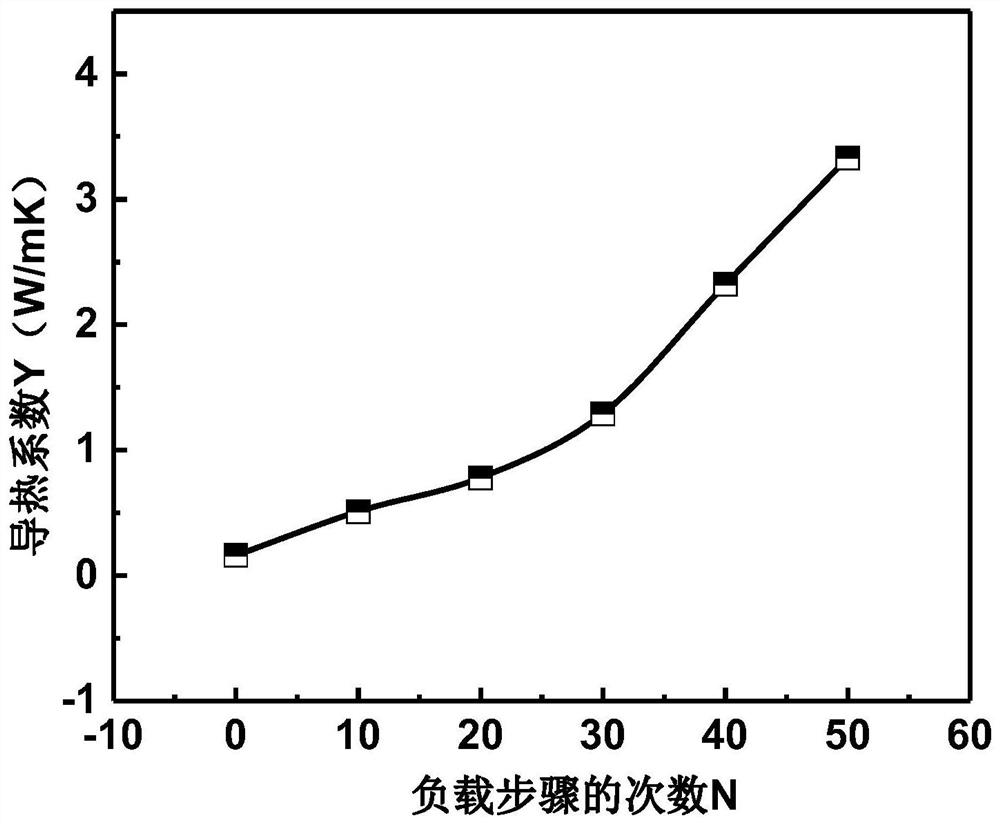Thermally conductive polymer composite material with multi-level continuous network structure and preparation method
A network structure and composite material technology, applied in the field of thermally conductive polymer composite materials and preparation, can solve the problems of a single three-dimensional continuous thermally conductive network structure, heat transfer, large average distance, etc., and achieve simple and easily available raw materials, high thermal conductivity, average small distance effect
- Summary
- Abstract
- Description
- Claims
- Application Information
AI Technical Summary
Problems solved by technology
Method used
Image
Examples
Embodiment 1
[0036] like figure 1 As shown, a preparation method of a thermally conductive polymer composite material with a multi-level continuous network structure comprises the following steps:
[0037]Prepare a network C, which is a polyurethane network with a pore size of 150 μm. Carry out the loading method for network C 50 times, each loading method is: immersing in dispersion A for 30 min, taking out and drying at 20°C for 0.5 h to obtain network C loaded with thermally conductive fillers, and immersing network C loaded with thermally conductive fillers solution B for 30min, taken out, centrifuged at 2000r / min for 30min, and dried at 20°C for 300min to obtain a thermally conductive polymer composite material, wherein,
[0038] The preparation method of dispersion liquid A is as follows: dispersing the thermally conductive filler in liquid D to obtain a mixture, ultrasonically treating the mixture with a cell crusher for 60 min to obtain dispersion liquid A, the power of ultrasonic...
Embodiment 2
[0056] A preparation method of a thermally conductive polymer composite material with a multi-level continuous network structure, comprising the following steps:
[0057] Prepare a network C, which is a melamine network with a pore size of 100 μm. Carry out the loading method for network C 50 times, each loading method is: immersing in dispersion A for 1 min, taking out and drying at 50 ° C for 1 h to obtain a network C loaded with thermally conductive fillers, and immersing network C loaded with thermally conductive fillers in the solution B for 20min, take out, centrifuge at 1000r / min for 15min, and dry at 50°C for 200min to obtain a thermally conductive polymer composite material, wherein,
[0058] The preparation method of dispersion A is as follows: dispersing the thermally conductive filler in liquid D to obtain a mixture, ultrasonically treating the mixture with a cell crusher for 5 min to obtain dispersion A, the power of ultrasonic treatment is 800W, and the concentra...
Embodiment 3
[0062] A preparation method of a thermally conductive polymer composite material with a multi-level continuous network structure, comprising the following steps:
[0063] Prepare a network C, which is a cellulose network with a pore size of 50 μm. Carry out the loading method for network C 50 times, each loading method is: immersing in dispersion A for 10 min, taking out and drying at 50°C for 3 h to obtain network C loaded with thermally conductive fillers, and immersing network C loaded with thermally conductive fillers into the solution B for 1 min, take out, centrifuge at 500 r / min for 15 min, and dry at 50 °C for 30 min to obtain a thermally conductive polymer composite material, wherein,
[0064] The preparation method of dispersion liquid A is as follows: dispersing the thermally conductive filler in liquid D to obtain a mixture, and ultrasonically treating the mixture with a cell crusher for 30 min to obtain dispersion liquid A, the power of ultrasonic treatment is 500...
PUM
| Property | Measurement | Unit |
|---|---|---|
| concentration | aaaaa | aaaaa |
| pore size | aaaaa | aaaaa |
| pore size | aaaaa | aaaaa |
Abstract
Description
Claims
Application Information
 Login to View More
Login to View More - R&D
- Intellectual Property
- Life Sciences
- Materials
- Tech Scout
- Unparalleled Data Quality
- Higher Quality Content
- 60% Fewer Hallucinations
Browse by: Latest US Patents, China's latest patents, Technical Efficacy Thesaurus, Application Domain, Technology Topic, Popular Technical Reports.
© 2025 PatSnap. All rights reserved.Legal|Privacy policy|Modern Slavery Act Transparency Statement|Sitemap|About US| Contact US: help@patsnap.com



